6. The Art of Felting
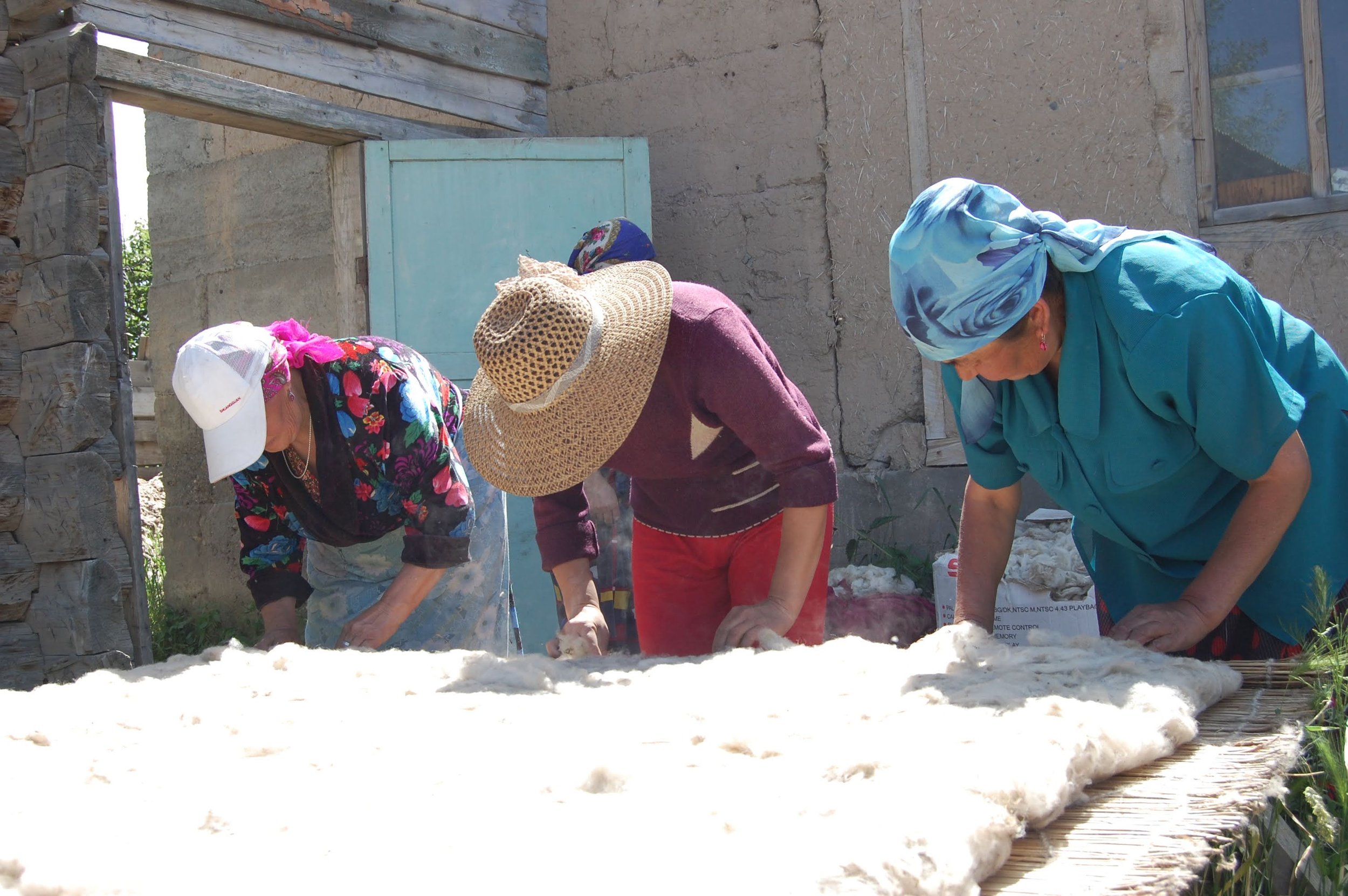
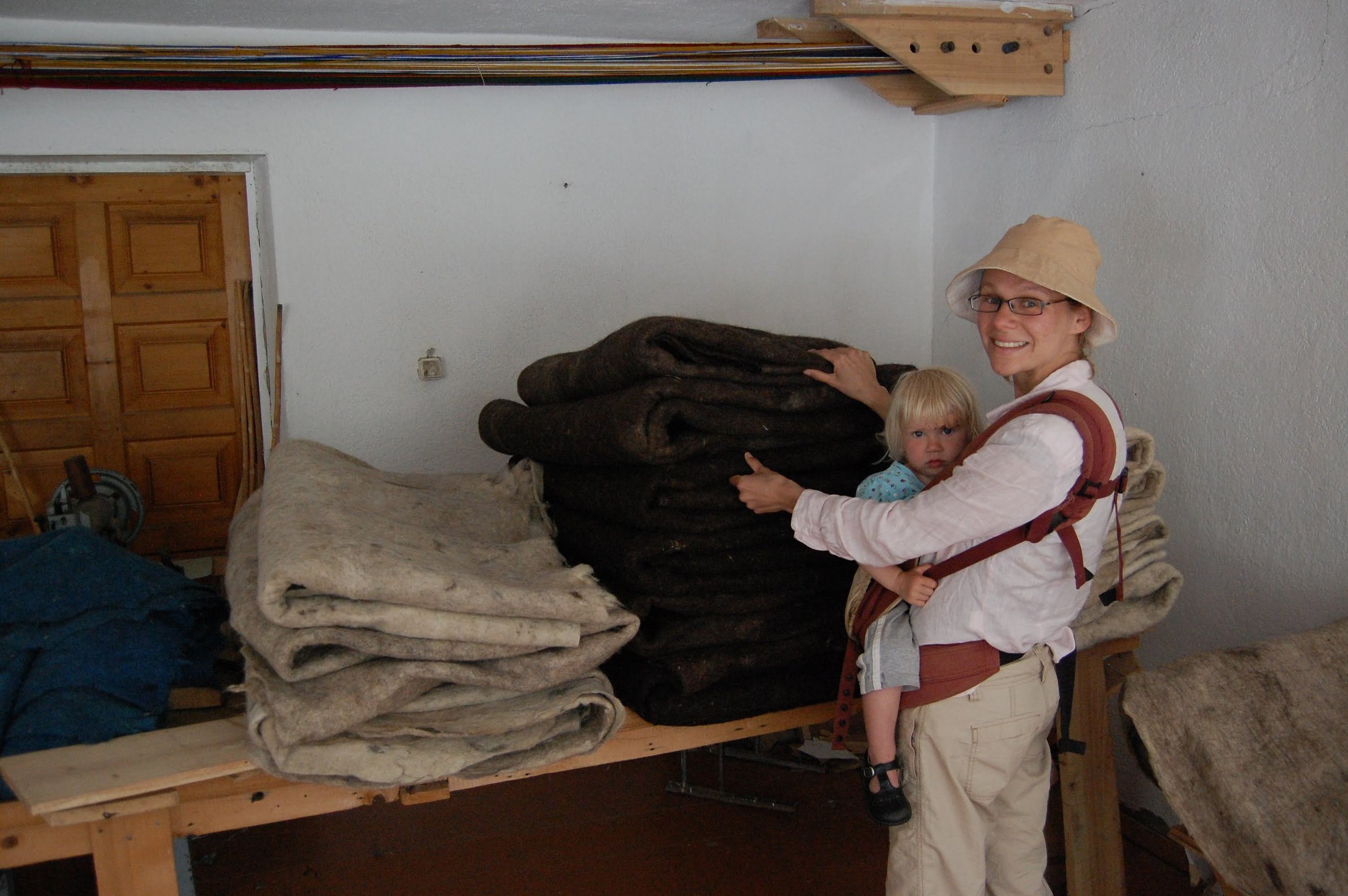
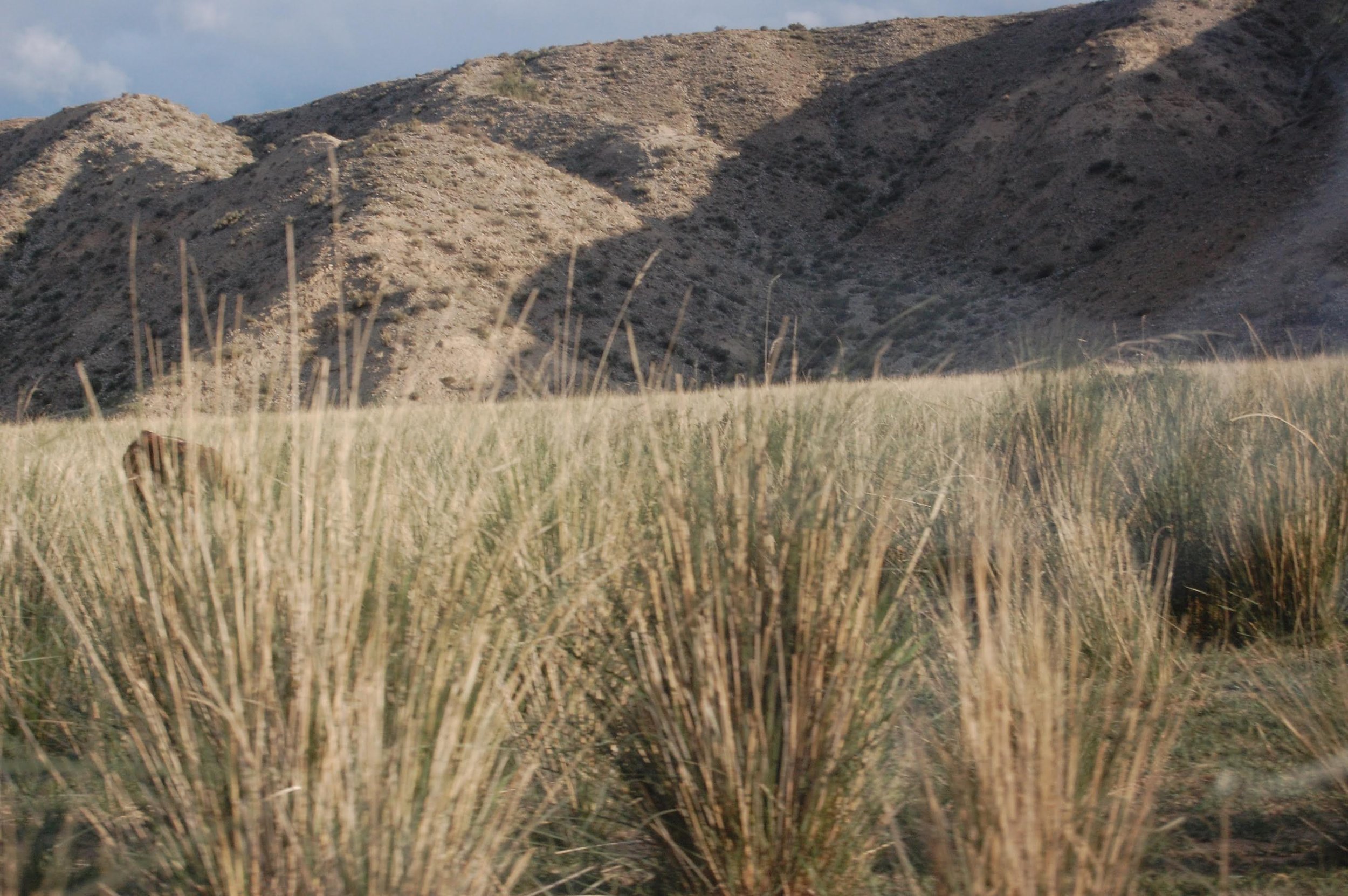
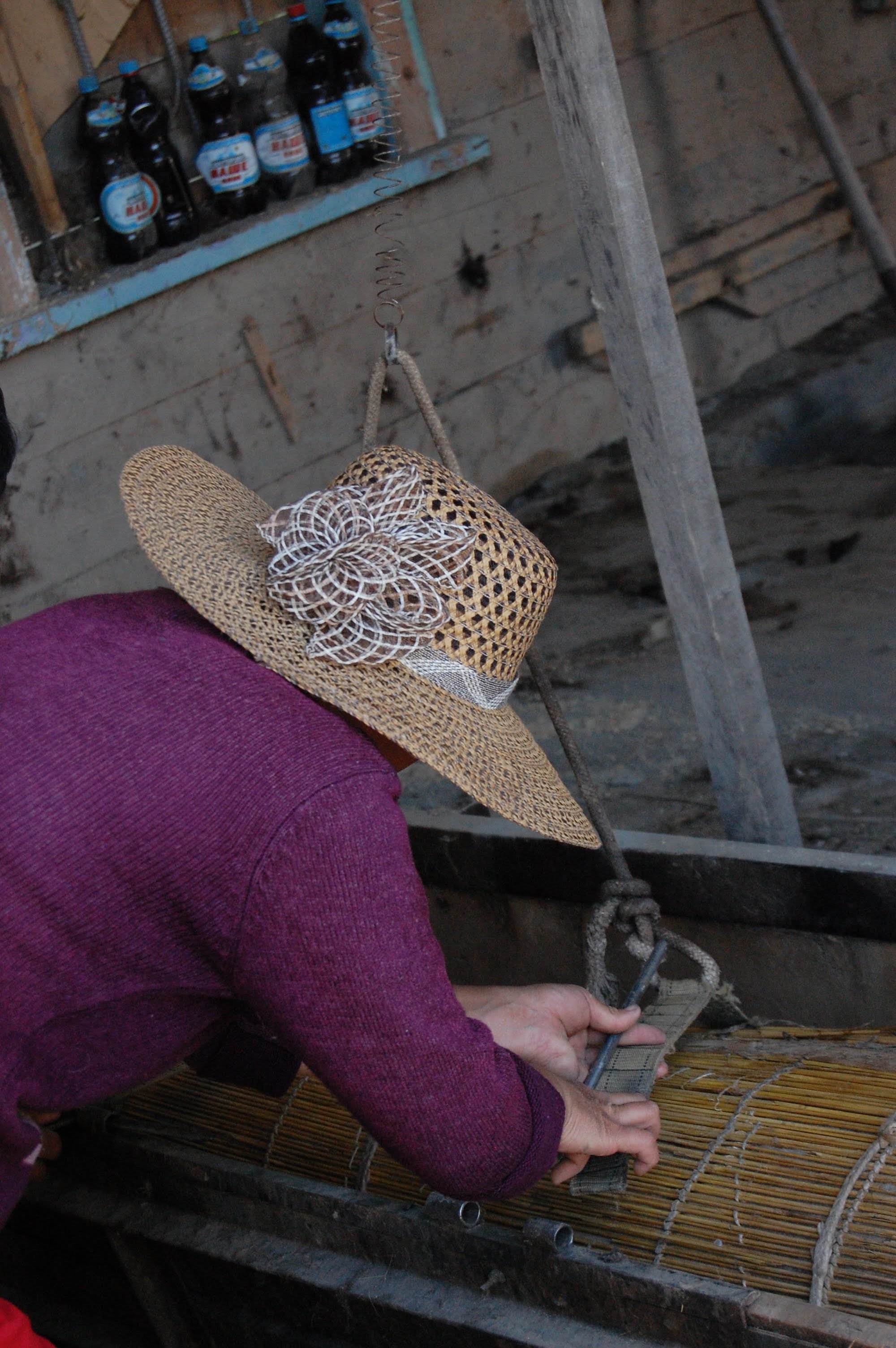
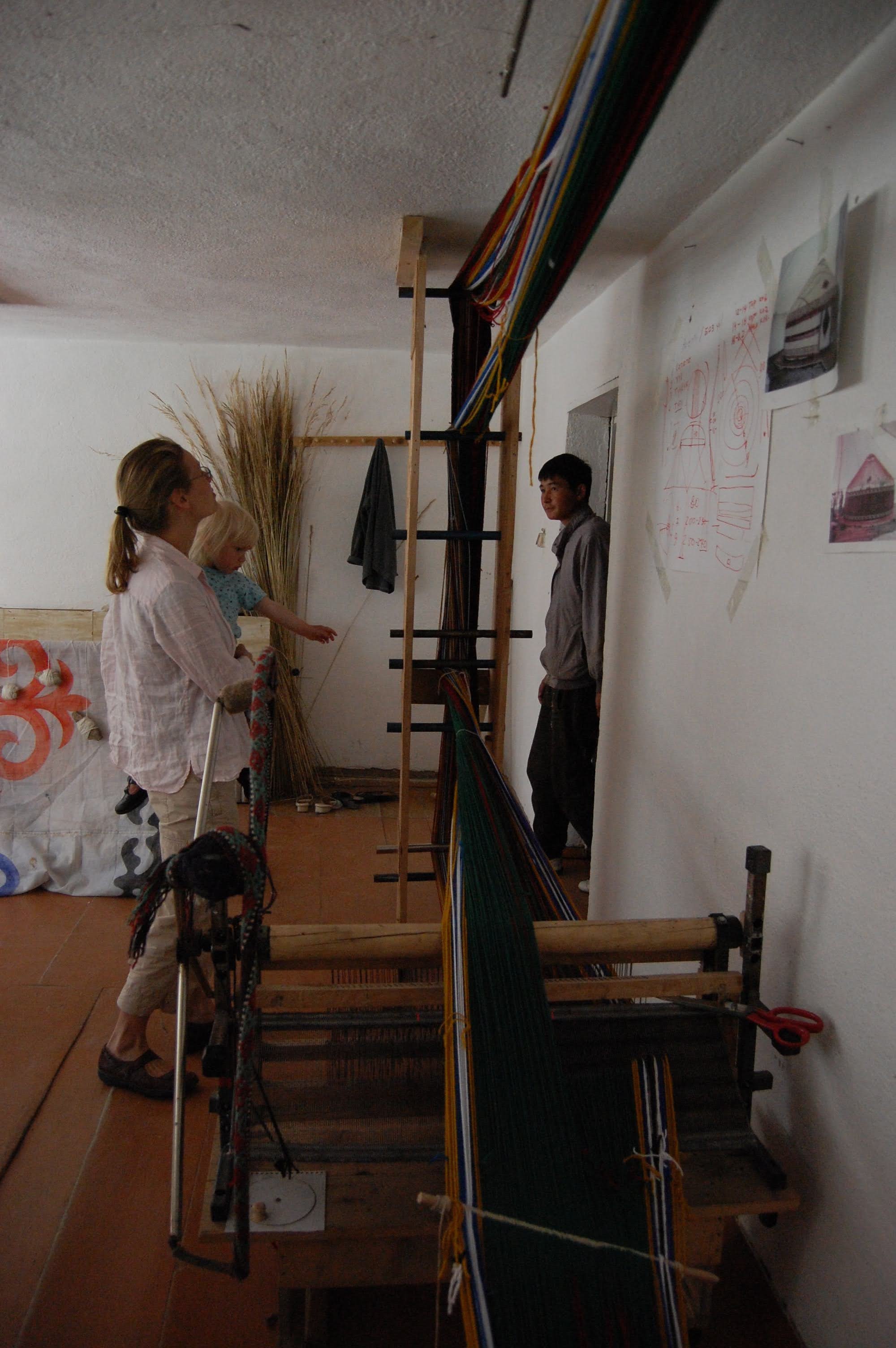
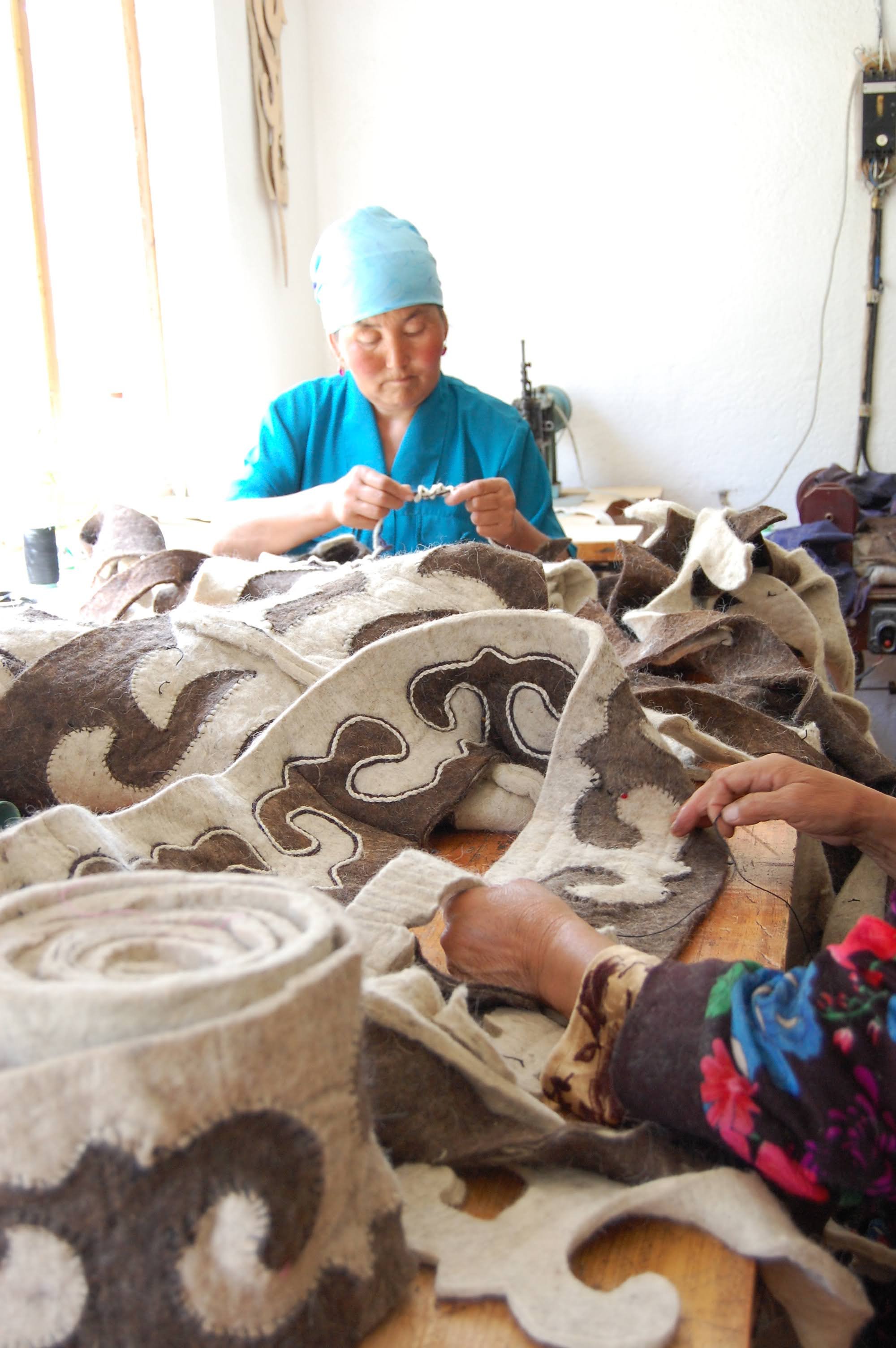
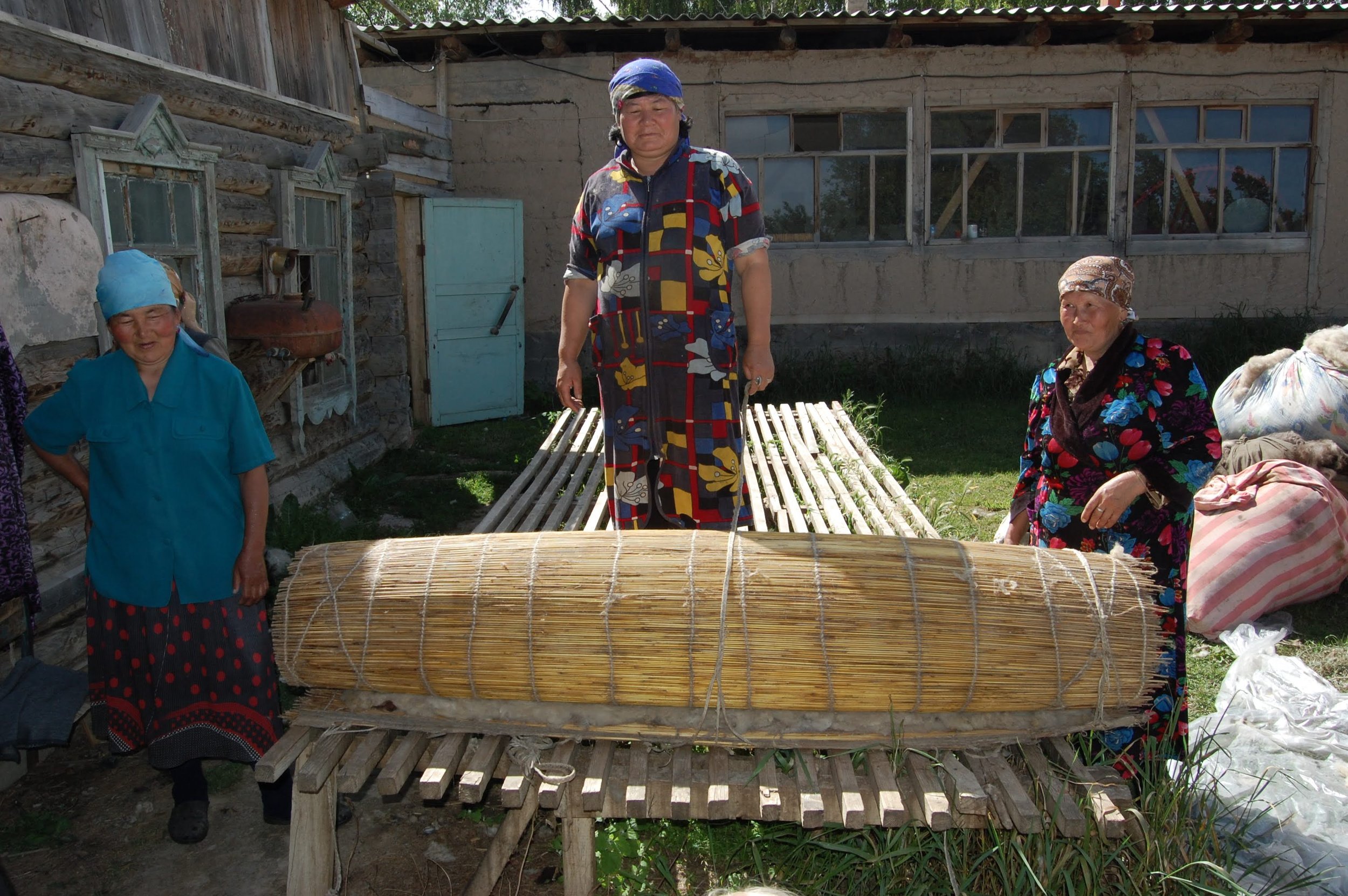
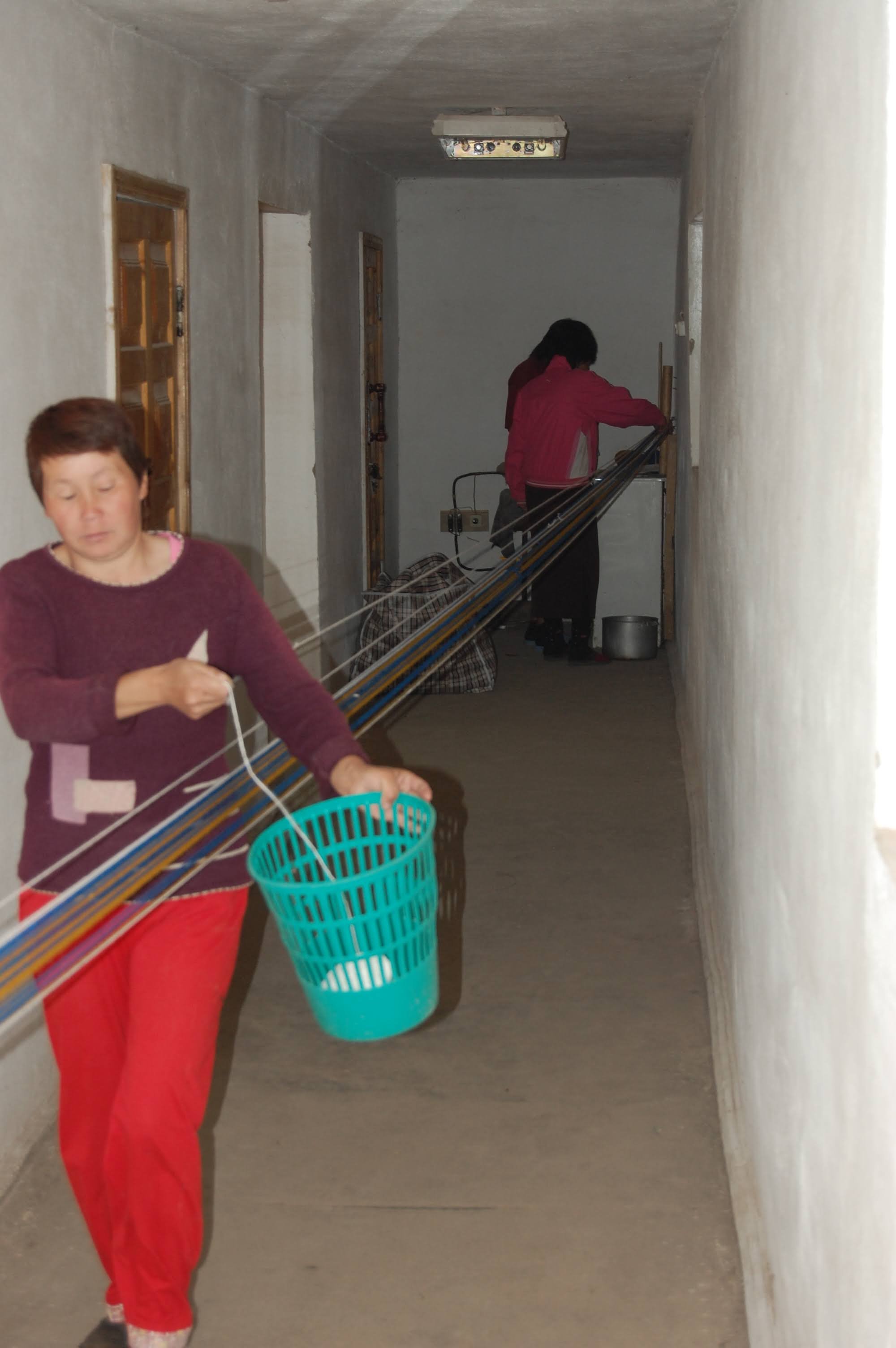
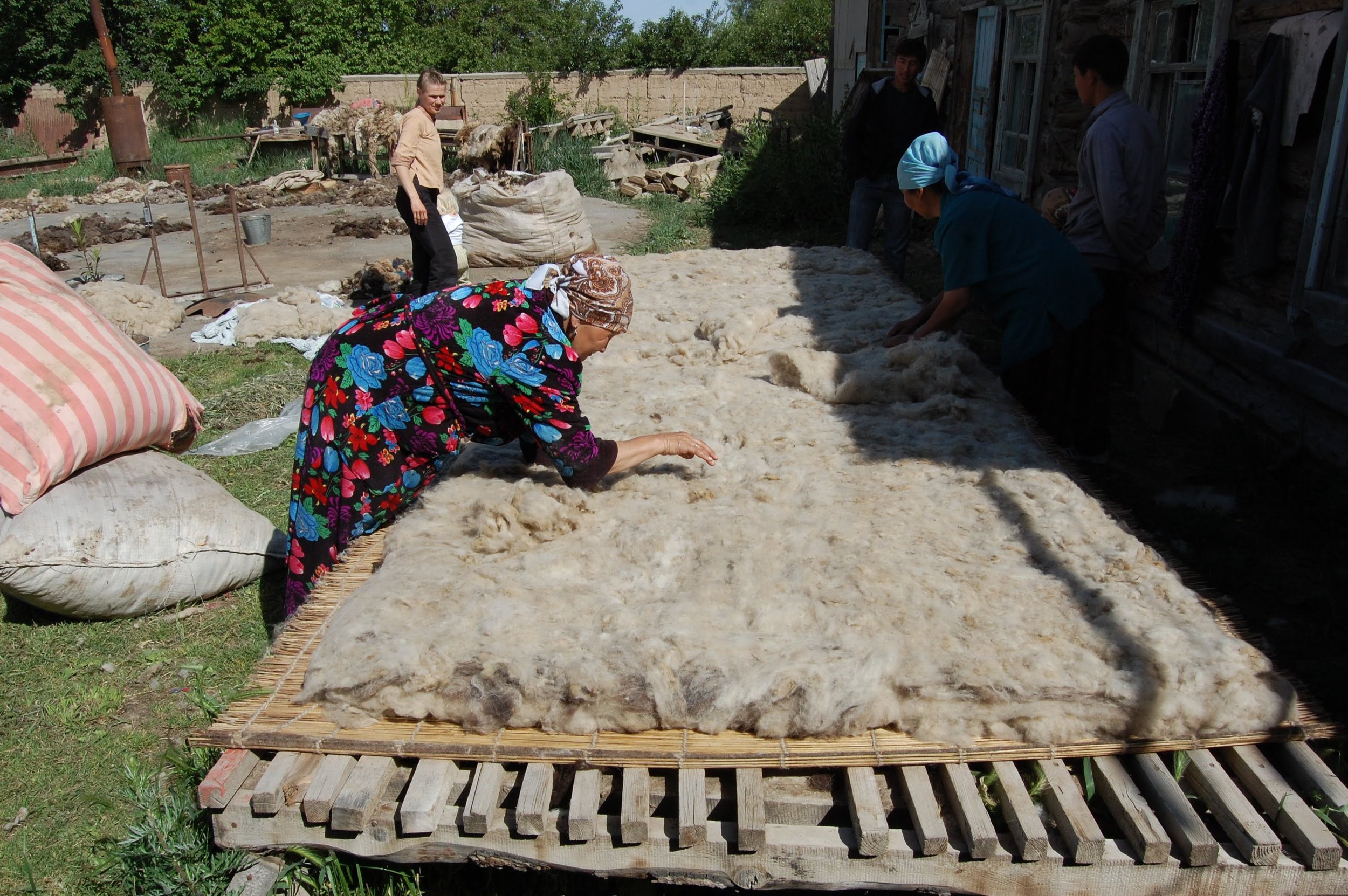
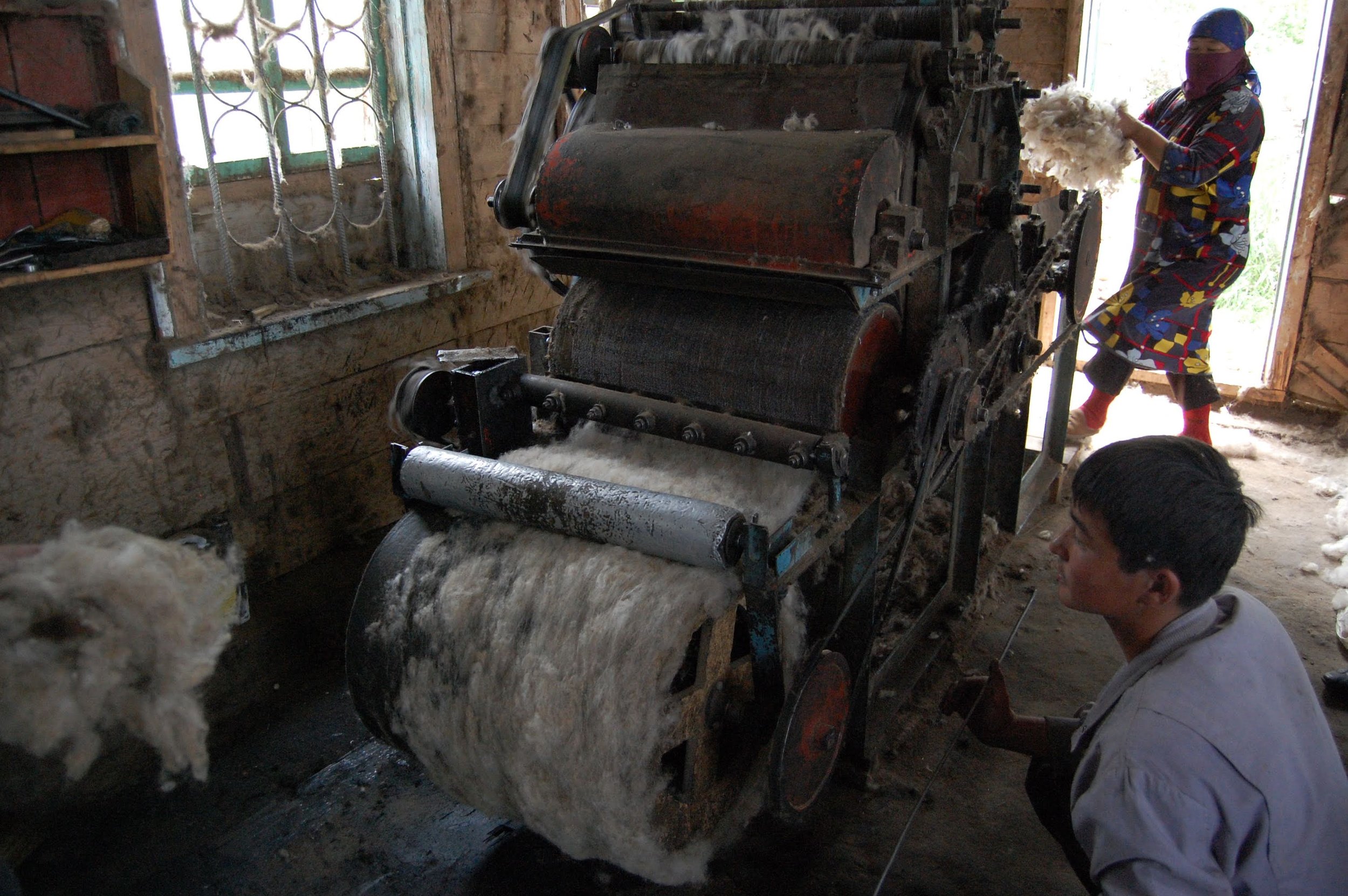
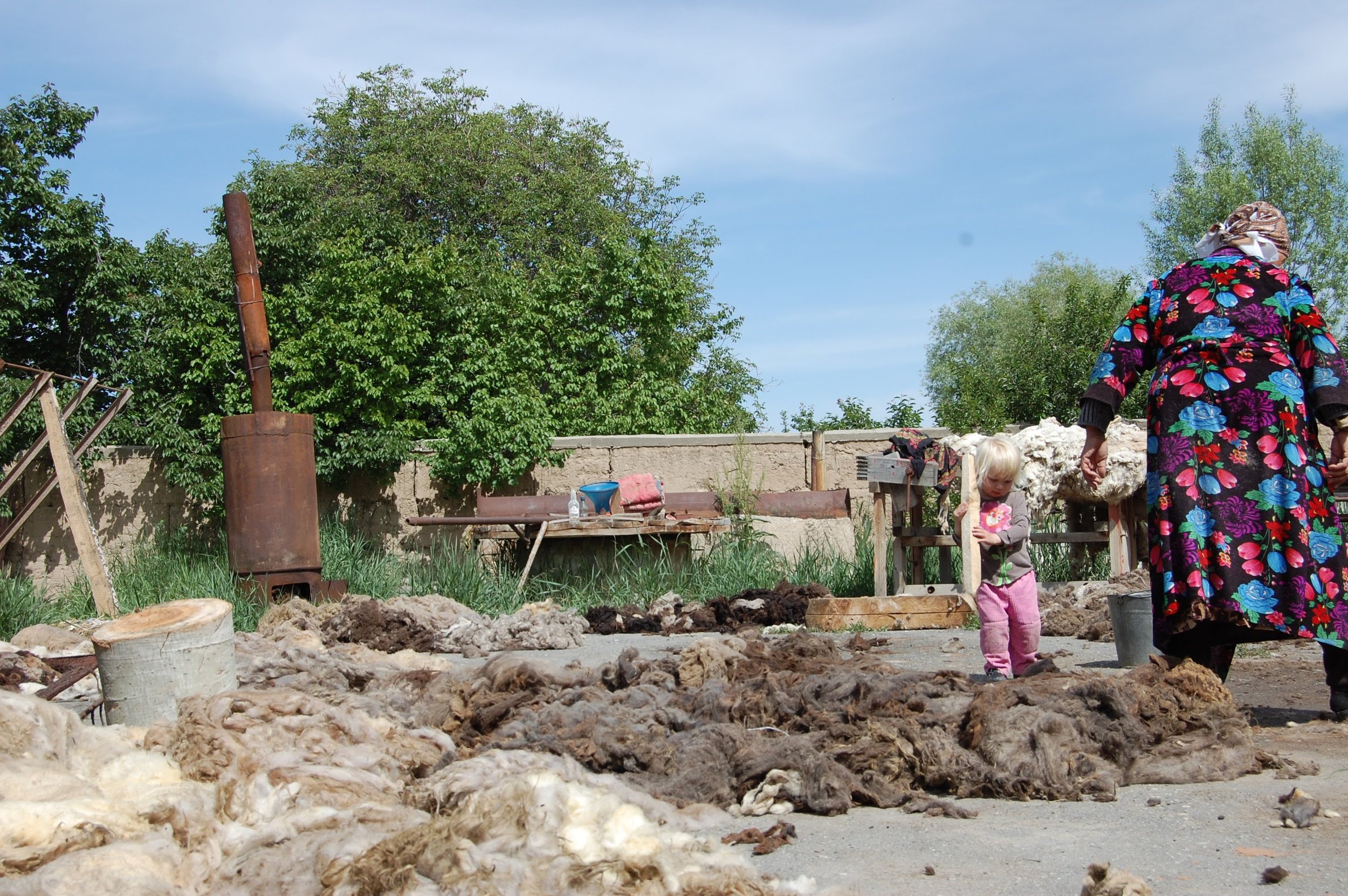
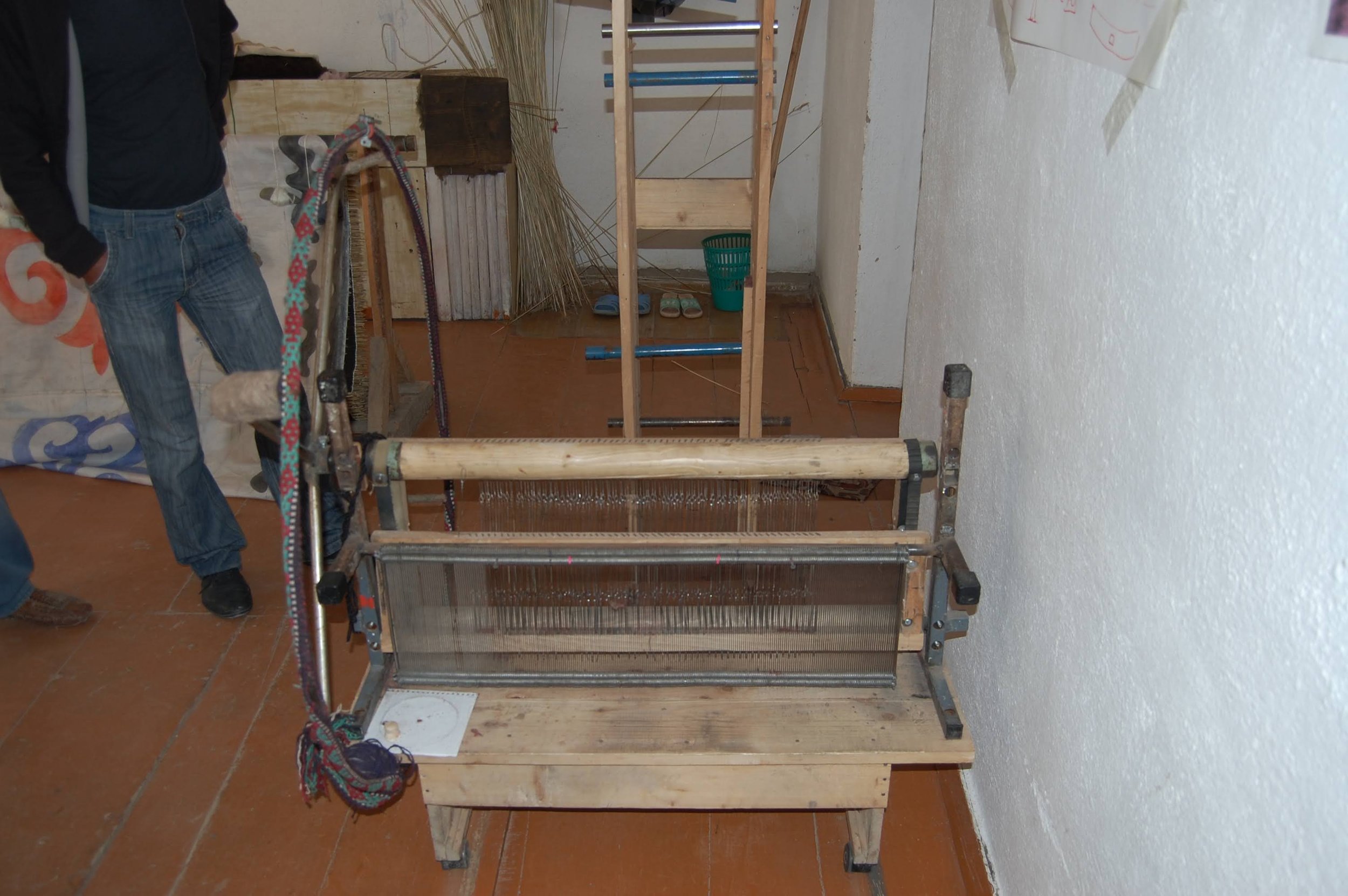
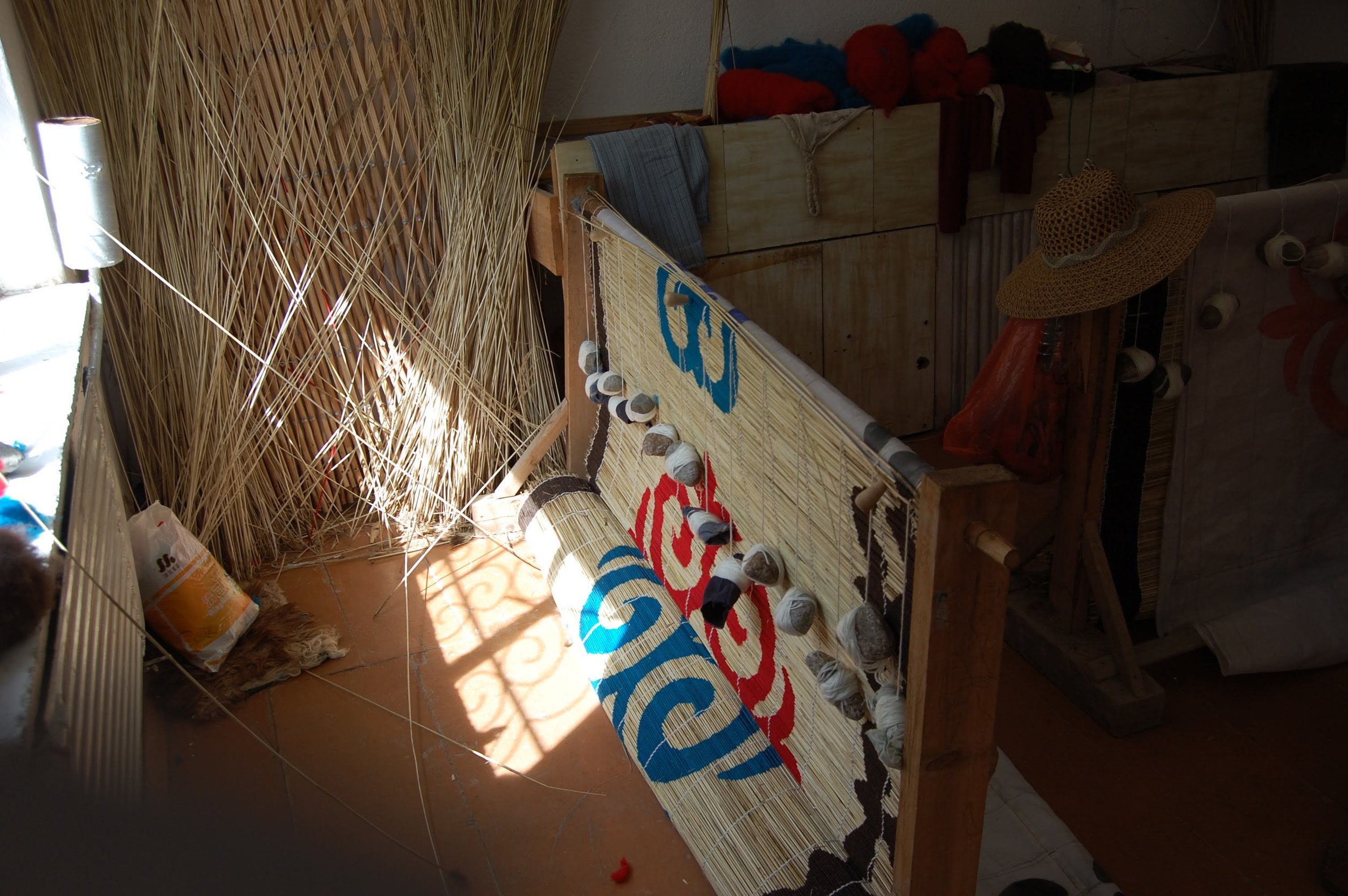

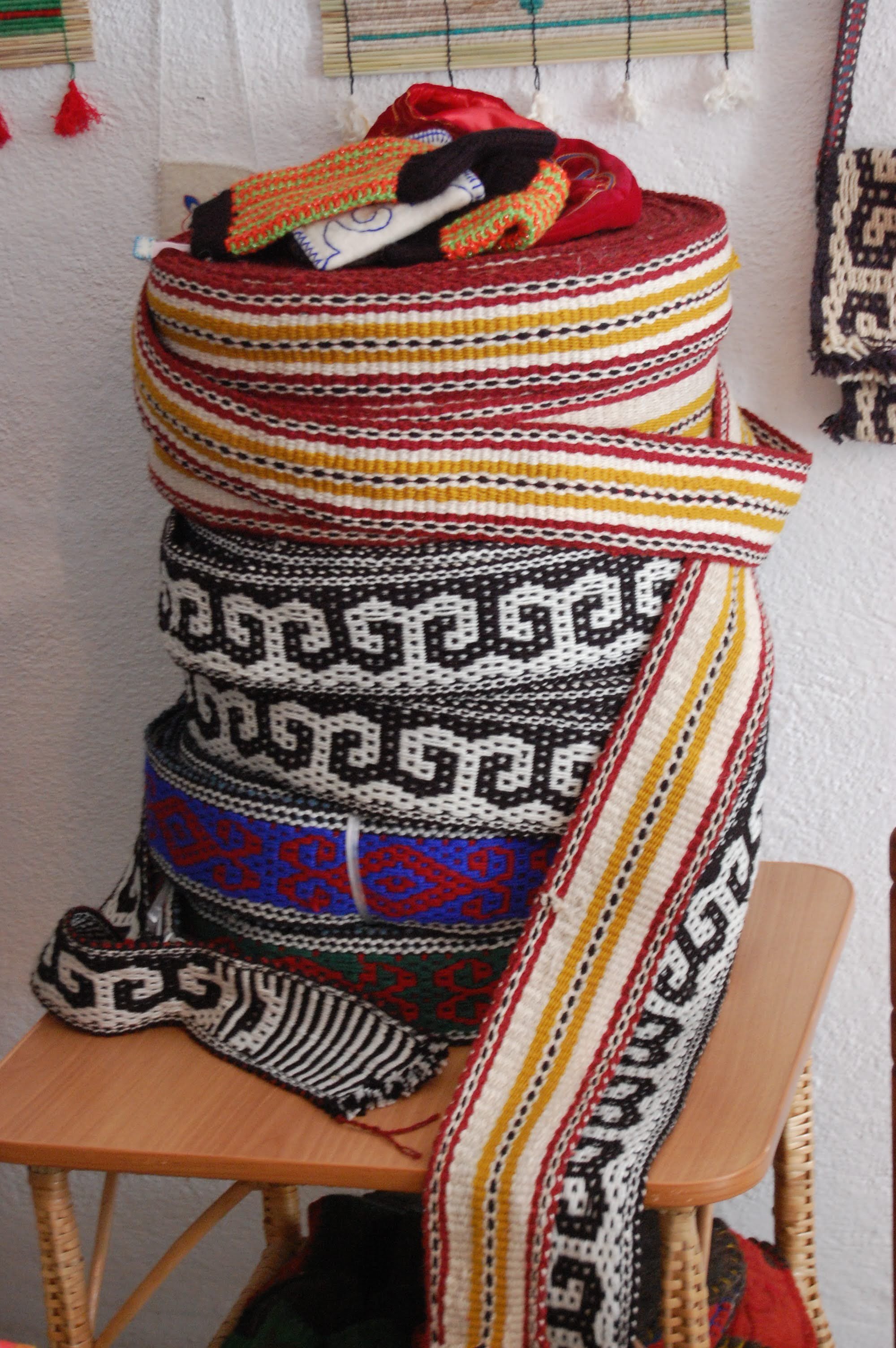
For breakfast deep fried bread, jams and coffee were served in the backyard yurt. We went to view Mr. Meken’s textile rooms to see the chij walls being made. Using a simple loom of one pole with a paper pattern underneath the chij, reed stalks are spun in between the fingers as appropriate coloured wool is pulled onto and around the chij. The color makes up a section of the pattern with a gap or new colour between. The chij is woven together with a cotton string that is weighed down with a rock.
The next room was shyrdak style bands used for exterior decorations. We will go into more detail of shyrdak making later on. On the other side of the room there was a loom for making woven tension bands. The maximum width is 14”. Once the wool was sorted into order it was stretched out into a long corridor approximately 60ft long. Then the wool was put onto the loom and organized, zigzagging up a holder across the ceiling, and through a hole in the wall, across the next room and back again.
When we arrived at Mr Meken’s workshop, the women were pulling out large bags of raw wool and separating it into piles of lighter and darker colors. I asked the type of sheep breed they were using. They said it was a “merino” sheep, but an ancient breed of the mountains. The wool was then put through a picker and carder. A wood stove was lit for boiling water and a table approximately 8ft by 20ft long was ready with an old chij mat laid out.
They were making an exterior felt cover for a 17 ft yurt. Very quickly they laid out seven layers of wool, all going in different directions. It probably took them most of the morning. After the wool was laid out, one of the women, who appeared to be in charge, told the men (a few other foreigners were visiting) not to take pictures or stand too close. The process of rolling the wool was considered sacred and perhaps disrespectful to have the men watching. When the water was boiling, one of the ladies stood on the table and started pouring water onto the first few inches. With the help of the other two women they began to roll up the wool, within the chij, adding more water as they went along. The chij was then bound together with rope and brought to the felter machine.
The machine was built by Mr Meken. It used a small gear box that ran two piston-like arms which pushed a board within a wooden casket that both pumped and rotated the chij mat. After 30 minutes of pumping, more boiling water was added, and after 45 minutes boiling water with soap was added. The last pumping was 30 minutes. They didn’t use a lot of soap because they wanted as much lanolin as possible to remain in the felt panels, as they were being used for exterior use. Lanolin helps to make the wool more water resistant. The felt came out very dense, with a lovely mixture of white and grey wool. The whole process was amazing to watch. We stood in awe watching the machine work. So simple and yet such an amazing product was made within just a few hours.
